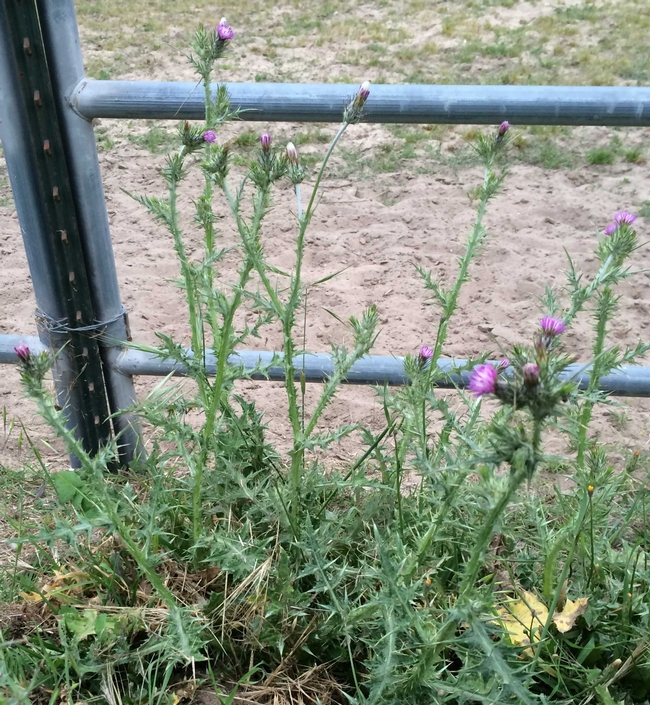After yesterday's lovely UCMGMB Garden Tour and all the well-loved and well cared-for gardens we were so lucky to visit, today's post is about the gardens, roadsides, ag fields, and abandoned lots of our area that still need some green thumb action. While the worst of the spring flush of weeds may now be past, hopefully this post will prepare us all for next year so that we can attack these weeds at the beginning of the season and eradicate them!
In my UCCE Master Gardener class we defined a weed as any plant that grows where you don't want it to grow. So that means it's kind of subjective. But there is general agreement among many gardeners, agriculture folks and sustainability folks about the identification of some common weeds in our area. I'll talk a bit about each one, give the common and scientific name, how to get rid of it, and direct you to any pest notes or other resources for more information. All of the “weeds” I'll be discussing today are not native to the Central California area and in fact, are not native to this country.
Bermuda buttercup or sourgrass (Oxalis pes caprae)

Black mustard (Brassica nigra)
I hate to break it to the people out there who rejoice in the fields of yellow flowers, but this is a weed. While some songbirds may eat the seeds and some farmers use it as a cover crop, there are better alternatives for habitat and agriculture out there. And there's a good reason why you often see black mustard spreading to fill an area: it produces chemicals that prevent the germination of native plants. As it spreads, black mustard can increase the frequency of fires in chaparral and coastal sage scrub, changing these habitats to annual grassland. Hand pulling after a rain is probably the easiest way to eradicate this plant. It has a sturdy taproot, so if it breaks off it may resprout. You can also cut plants below the root crown with a pick or shovel. Any removal strategies should happen before seed pods develop.
Wild radish (Raphanus sativus or R. raphanistrum)

For some pro-wild radish info:
For some anti-wild radish info:
From the California Agriculture journal, an article entitled "When crop transgenes wander in California, should we worry?"
UCANR Green Blog entitled "Hedgerows enhance beneficial insects on farms in California's Central Valley"
Poison hemlock (Conium maculatum)
Poison hemlock is also blooming in some locations right now, although in my yard it is just starting to poke up its lacy fronds that kind of remind me of carrot greens. It's called “poison” hemlock for a reason. The sap of the plant can cause blistering on your skin and if too much is ingested it can kill livestock. Poison hemlock can also crowd out other, more desirable plants. Hand pulling, mowing, biological and chemical controls are all available. Best is to prevent a small-scale infestation before it spreads.
From the UC Master Gardener Program Advice to Grow By blog, a post entitled "Poison hemlock widespread in California"
Italian thistle (Carduus pycnocephalus)

Cal-IPC Italian Thistle Plant Profile
From the UCANR Hopland Research and Extension Center's blog post "Weed biological control at work at Hopland"
If you've got any questions about these or other weed species, feel free to call our Master Gardener Hotline at 831-763-8007 or get in touch online at our website!